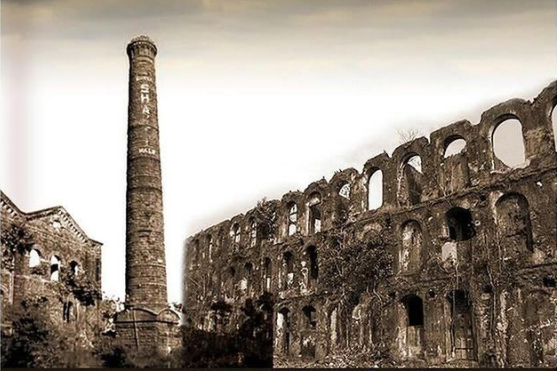IndoGerman Film: Girangaon is yet another Mohen Jo Daro [Marathi/Hindi], [OmeU], IND 2024, R.: Ashok Rane, 131 Min.
AUDIENCE AWARD this YEAR by Indogerman Film Week
TODAY: SPECIAL GUEST Director's daughter Anuya Rane, She will introduce the movie + Q&A
In the 1850s, a civilisation flourished around the cotton mills in Mumbai. This civilisation was known as Girangaon- the Abode of Mills, an offspring of the industrial revolution. The mill workers hailed from various regions of Maharashtra and other parts of India belonged to various castes, creeds, and religions, but eventually they became of one caste, one religion called - Mill Worker. They created their own region – Girangaon. Girangaon culture rejoiced in the unique sense of unity, an amazingly colourful and vibrant society - culturally rich, socially flexible and politically aware - played vital roles in many political movements.
Deprivation and adverse conditions never let their zeal dampen or their energy wane. And then in 1982, a strike of mill-workers marked total devastation of Girangaon! The mill worker is nowhere to be seen since! Girangaon ceased to exist. Girangaon is Yet Another Mohenjodaro.
“Girangaon is Yet Another Mohen Jo Daro…” – comes as a Mumbai Mirror. PK Verdict: Silver Plus 3.5*s
watch trailer of “Girangaon is Yet Another Mohen Jo Daro…” – comes as a Mumbai Mirror. PK Verdict: Silver Plus 3.5*s Watch
“Girangaon is Yet Another Mohen Jo Daro…” – comes as a Mumbai Mirror.
“Girangaon is Yet Another Mohen Jo Daro…” is a reflective exploration of Mumbai’s historic mill district, Girangaon. Directed by Ashok Rane, the documentary delves into the complex socio-economic transformation of this area, once the throbbing heart of Mumbai’s textile industry. The title draws a provocative parallel between Girangaon and Mohenjo-daro, suggesting a narrative of rise and fall, evoking images of a once-flourishing civilization now facing decay and obsolescence.
Rane’s documentary meticulously chronicles the history of Girangaon, from its establishment in the 19th century to its peak and subsequent decline in the late 20th century. The documentary examines the socio-political factors that contributed to the decline of the textile mills and the resultant impact on the mill workers and their communities. Director here contextualizes this within the broader shifts in Mumbai’s urban landscape, highlighting the transition from an industrial economy to one dominated by real estate and services.
The comparison with Mohenjo-daro is apt in illustrating the dramatic transformation Girangaon has undergone. Mohenjo-daro, one of the largest settlements of the ancient Indus Valley Civilization, is often associated with sophisticated urban planning and a mysterious decline. Similarly, Girangaon was once a vibrant industrial hub, characterized by its bustling mills and a close-knit worker community. However, like Mohenjo-daro, Girangaon’s decline seemed inevitable due to various socio-economic pressures and policy shifts.
While the comparison to Mohenjo-daro is compelling, some readers might find it a stretch. The historical and cultural contexts of the two sites are vastly different, and the analogy may not resonate with everyone. Nevertheless, it works as a good bait creating the right curiosity to watch this one.
The director uses a combination of archival footage, interviews, and contemporary shots of Girangaon to weave a rich tapestry of its history. The cinematography effectively contrasts the past and present, showcasing the grandeur of the old mills alongside the modern urban landscape that has replaced them. The use of personal anecdotes and stories from former mill workers adds a deeply human element to the narrative.
The film explores the concept of urban decay, drawing parallels to the ancient city of Mohenjo-daro, which also experienced a mysterious decline. The documentary delves into the economic shifts that led to the decline of the mills, including the impact of globalization, changes in labor laws, and the rise of real estate as a dominant industry in Mumbai.
The film highlights the social impact of the mills’ closure on the workers and their families, many of whom were left without livelihoods and forced to adapt to new economic realities. It underscores the resilience and adaptability of the community in the face of such drastic changes.
The director’s use of visual storytelling, with striking imagery of the old mills and the modern cityscape, effectively conveys the themes of change and continuity.
A crispier editing would have helped enriching the experience as somewhere in between you do feel overwhelm with the same information. Nevertheless, Mumbai history unfolds well, keeping you engaged for most of its runtime.
PK Verdict: Silver Plus 3.5*s
